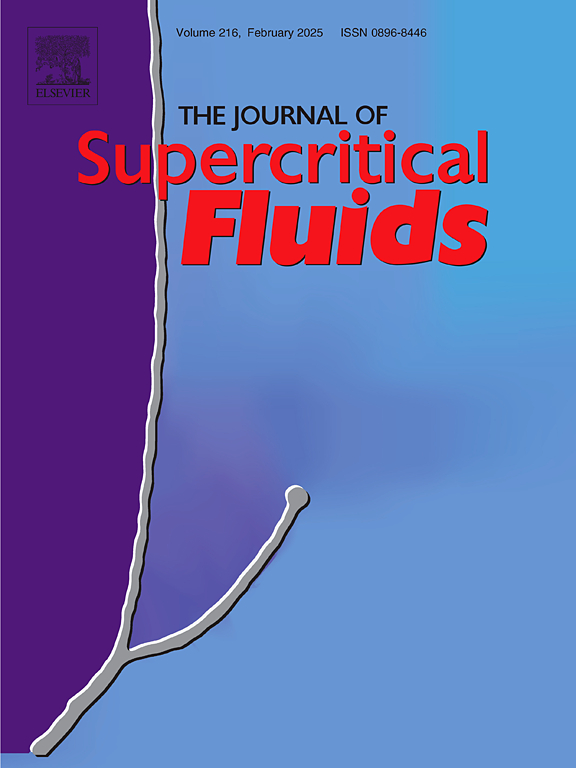Prediction of CO2 solubility in polar aprotic solvents using the PC-SAFT equation of state
IF 4.4
3区 工程技术
Q2 CHEMISTRY, PHYSICAL
引用次数: 0
Abstract
In this work, the PC-SAFT equation of state (EoS) is used to predict the solubility of CO2 in polar aprotic solvents (PASs). The PAS molecules are modeled as pseudo–associating molecules to mimic the polar interaction. Four scenarios are considered to study the CO2 solubility in PASs. In scenario I, the CO2 and PAS molecules are considered inert molecules (non-associating), in scenario II, the CO2 molecules are modeled as inert, in scenario III the PAS molecules are considered inert, and in scenario IV all components are modeled as associating molecules. In scenario IV, the cross-association between PAS and CO2 molecules is considered. The vapor-liquid equilibrium (VLE) of binary systems is predicted without using any additional adjustable parameters. The ARD values of scenarios I to III for all binary systems are almost the same. The average ARD values of scenarios I to III, and IV are about 22.3 %, and 11.6 %, respectively. The results show that by considering the cross-association between CO2 and PAS the model performance improves dramatically. Therefore, considering non-auto associative molecules as associative ones is a trick that improves the model prediction capability.
用PC-SAFT状态方程预测CO2在极性非质子溶剂中的溶解度
在这项工作中,使用PC-SAFT状态方程(EoS)来预测CO2在极性非质子溶剂(PASs)中的溶解度。PAS分子被建模为伪缔合分子来模拟极性相互作用。考虑了四种情况来研究CO2在PASs中的溶解度。在情景1中,CO2和PAS分子被认为是惰性分子(不缔合),在情景2中,CO2分子被建模为惰性分子,在情景3中,PAS分子被认为是惰性分子,在情景4中,所有组分都被建模为缔合分子。在情景IV中,考虑了PAS和CO2分子之间的交叉关联。在不使用任何附加可调参数的情况下,对二元系统的气液平衡进行了预测。对于所有的双星系统,情形一到情形三的ARD值几乎相同。场景1 ~场景3的平均ARD值约为22.3% %,场景4的平均ARD值约为11.6% %。结果表明,考虑了CO2和PAS之间的交叉关联,模型的性能得到了显著提高。因此,将非自结合分子视为结合分子是提高模型预测能力的一种手段。
本文章由计算机程序翻译,如有差异,请以英文原文为准。
求助全文
约1分钟内获得全文
求助全文
来源期刊

Journal of Supercritical Fluids
工程技术-工程:化工
CiteScore
7.60
自引率
10.30%
发文量
236
审稿时长
56 days
期刊介绍:
The Journal of Supercritical Fluids is an international journal devoted to the fundamental and applied aspects of supercritical fluids and processes. Its aim is to provide a focused platform for academic and industrial researchers to report their findings and to have ready access to the advances in this rapidly growing field. Its coverage is multidisciplinary and includes both basic and applied topics.
Thermodynamics and phase equilibria, reaction kinetics and rate processes, thermal and transport properties, and all topics related to processing such as separations (extraction, fractionation, purification, chromatography) nucleation and impregnation are within the scope. Accounts of specific engineering applications such as those encountered in food, fuel, natural products, minerals, pharmaceuticals and polymer industries are included. Topics related to high pressure equipment design, analytical techniques, sensors, and process control methodologies are also within the scope of the journal.
 求助内容:
求助内容: 应助结果提醒方式:
应助结果提醒方式:


